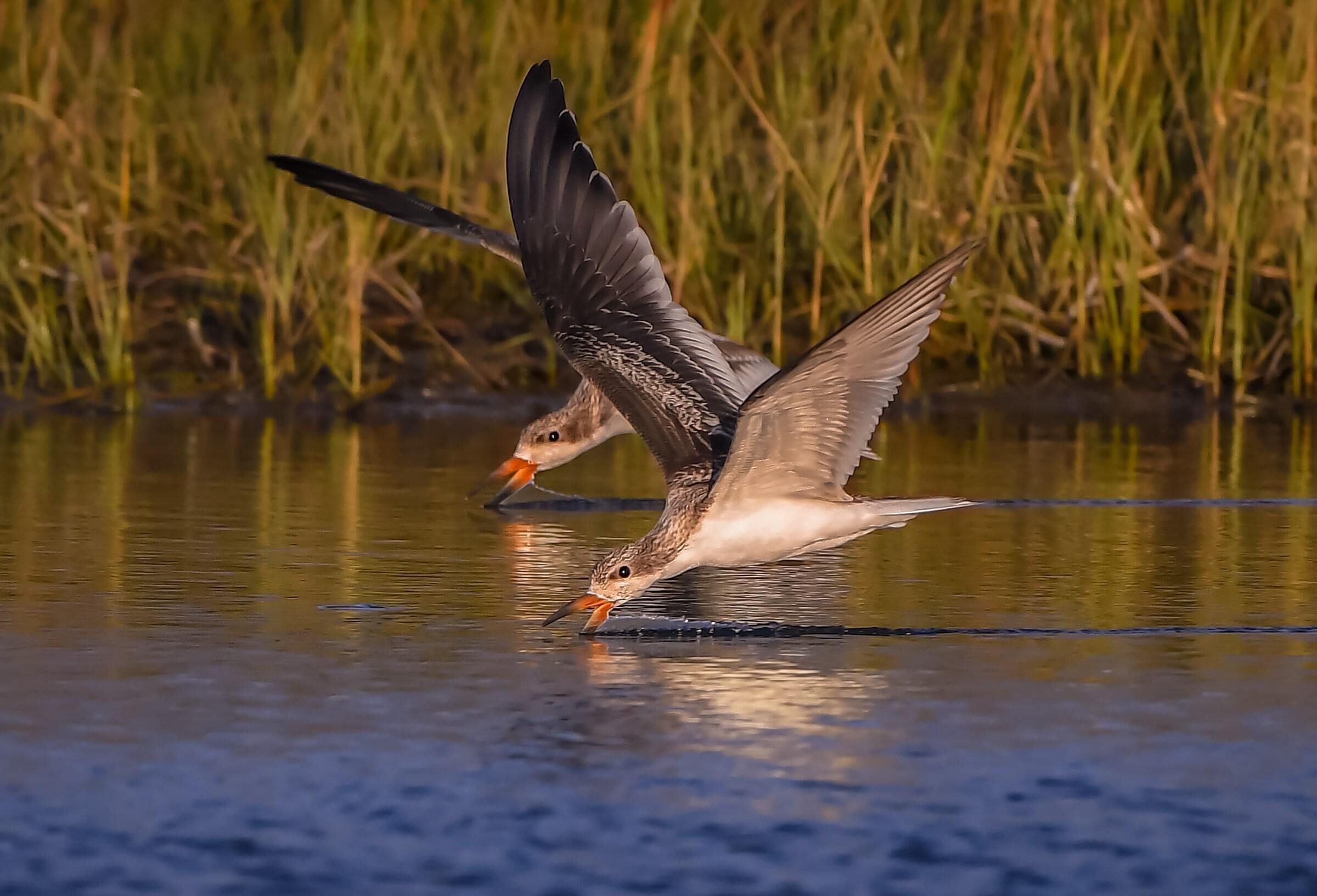

History of the Audubon Society of Rhode Island
1897
The Audubon Society of Rhode Island is formed by a group of concerned citizens, in opposition to the killing of wild birds for the commercial feather trade.
•
1907
Just ten years after its origin, the Audubon Society of Rhode Island has 1,300 members - a number that has grown to more than 17,000 today.
•
1916
The Migratory Bird Treaty Act is established, abolishing feather hunting nation-wide. Meanwhile, "environmental education" becomes a reality for the Society, as Audubon teaches local students with a very strong presence on Block Island.
•
1924
The Kimball Bird Sanctuary in Charlestown becomes the Audubon's first property. It is deeded to Audubon so that visitors can view the birds that nest and migrate there.
•
1940
The National Audubon Society is established. The Audubon Society of Rhode Island and other New England Audubon organizations remain independent and unaffiliated groups, to continue serving their respective states.
•
1950's
Audubon begins formalizing its "environmental education" programs with local schools. Meanwhile, additional parcels of wildlife habitat acreage are added to the Audubon Wildlife Refuge network. Noteworthy among the growing refuge network are George B. Parker Woodland, Emilie Ruecker Wildlife Refuge, Seekonk's Caratunk Wildlife Refuge, and Eppley Wildlife Refuge in South Kingstown.
•
1961
The first adventurous birders take part in RI Audubon's premier Block Island Birding Weekend. Today, Audubon leads a number of trips across New England each year.
•
1962
Rachel Carson's Silent Spring is published and stuns readers everywhere.
•
1966
The Audubon Report, Audubon's membership newsletter, sees its first edition published.
•
1971
Audubon's leadership and environmental advocacy leads to the creation of the Rhode Island Wetlands Act.
•
1972
The Federal government institutes a national ban on DDT pesticides. Through the 1960's and 1970's, Audubon stood in the vanguard of the battle to ban DDT in Rhode Island, which was among the first states to curtail the toxin's use.
•
1980
Audubon's refuge network totals more than 4,000 acres.
•
1981
The Audubon Great Expeditions program begins. Since then, thousands have traveled to naturally rich settings in the Eastern United States and Canada for bird-watching and nature observation. Meanwhile, Audubon organizes and leads the state's first Coastal Cleanup.
•
1983
Audubon hosted its first-ever Bird-a-Thon, during which 182 collective species of birds were identified.
•
1986
Audubon promotes and supports the passage of Rhode Island's statewide recycling program through the General Assembly.
•
1987
Audubon moves its headquarters to Powder Mill Ledges Wildlife Refuge in Smithfield, allowing visitors to enjoy birding and programming on 120 acres of woodlands and wetlands, surrounding the administrative offices.
•
1991
Audubon opposes the use of processed drinking water for industrial cooling. Meanwhile, the early 1990s sees the opening of the 1,000-acre Fisherville Brook Wildlife Refuge in Exeter and the Touisset Marsh Wildlife Refuge in Warren.
•
1996
Audubon springs to action for triage and treatment of stricken sea creatures and waterfowl during the 1996 North Cape oil spill crisis. Meanwhile, the 235-acre Florence Sutherland Fort & Richard Knight Fort Nature Refuge, opens for public enjoyment in North Smithfield.
•
1997
Audubon brings environmental education to a record 15,000 kids.
•
2000
Audubon's $3.5 million Environmental Education Center (now the Nature Center and Aquarium) in Bristol opens. The state-of-the-art exhibitions and dioramas enthrall visitors, preparing them to understand and experience the surrounding refuge habitats and wildlife.
•
2002
Audubon dedicates the Claire D. McIntosh Wildlife Refuge in Bristol, which surrounds the Environmental Education Center (now the Nature Center and Aquarium) and offers diverse wildlife habitats such as woodlands, fields, meadows, salt marshes and shoreline.
•
2004
Audubon establishes the Land Legacy Fund to ensure we have the resources to protect the habitats we steward for maximum wildlife benefit. Audubon also announces its groundbreaking Environmental Education for Urban Schools Initiative, which provides critical environmental programming to enhance school science curricula in under-served communities.
•
Today
The Audubon Society of Rhode Island'senvironmental education programs in Rhode Island schools and communities reach well over 20,000 students of all ages, each year. The organization has grown to become one of the largest private landholders in the state, protecting nearly 10,000 acres of wildlife habitat for future generations. Fourteen Wildlife Refuge locations with trail systems are open to the public for exploration and enjoyment. Our vigilant advocacy programs and partnerships keep the public and government informed of threats to the environment.
Support Our Work
Your generosity will help sustain and grow our conservation, education, and advocacy efforts right here in Rhode Island!
Visit Us
Start exploring nearly 10,000 acres of natural habitat across Rhode Island and nearby Massachusetts.
Programs and Events
Get outside and learn about the natural world!

















